Leongatha Statues and Monuments

Leongatha has a range of interesting statues and monuments.
Location of Statues and Monuments
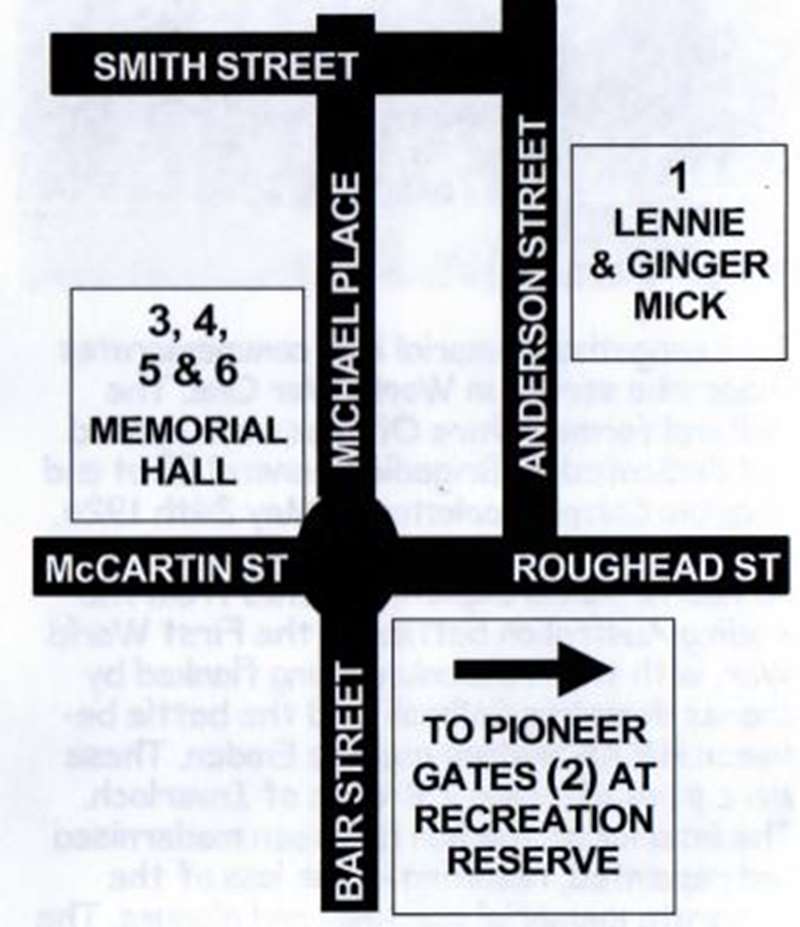
1. Sited at Centennial Park Leongatha, this bronze statue commemorates Lennie and his pony Ginger Mick. This nine year old boy from Koonwarra rode his pony to Sydney and back again in 1932 for the opening of the Sydney Harbour Bridge. His feat is immortalised in this fine statue, which was unveiled on the 17th of October 2017.
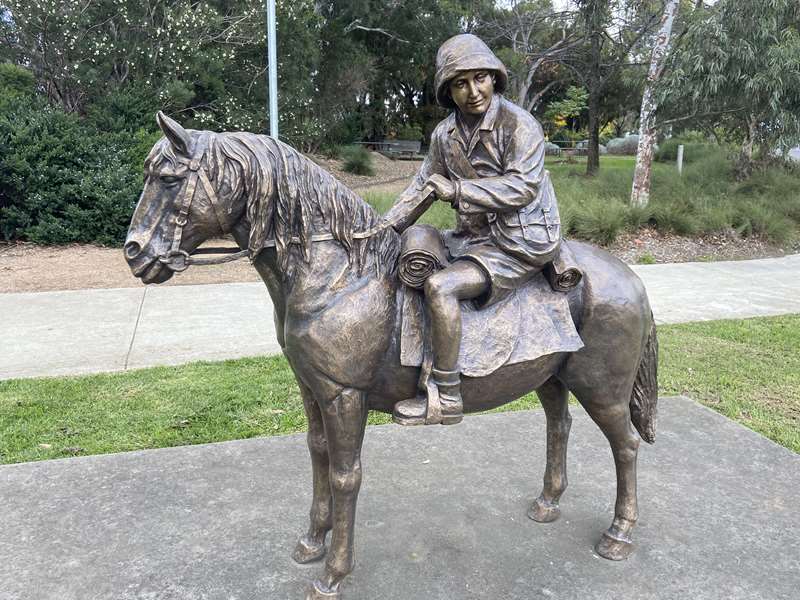
Lennie Gwyther and Ginger Mick
Charles James Leonard Gwyther (Lennie) was born on the 18 April 1922, the eldest son of Leo and Clare Gwyther. His home was 'Flers', a farm just outside the small country town of Leongatha. When Lennie was just two years old, his grandparents gave him as a birthday present, a two year old pony named Ginger Mick.
Construction of the Sydney Harbour Bridge commenced in 1923, and as Lennie grew into a school child, he was fascinated by the amazing construction, and when the halves of the bridge were joined in 1930, he dreamed of attending the opening.
When Lennie was 9 years old, his beloved father 'The Captain' suffered a broken leg, and had to be taken to hospital in Melbourne. During the time his father was unwell, Lennie took over many of the farm duties.
When his father recovered and returned home, he was amazed at the work Lennie had done, and offered him a reward for his efforts. Lennie asked to be allowed to ride Ginger Mick to Sydney to see the opening of the Harbour Bridge.
After much planning, and eventual agreement from Lennie's mother, Lennie set off on his journey on 3 February 1932. He rode for over 1,000 km's to arrive in Sydney in time for the opening on 19 March 1932. Over the course of his ride, the newspaper reports of a boy riding his horse to Sydney made him so famous he was invited to take part in the procession after the opening.
After the opening, and after watching a game of cricket with Sir Donald Bradman playing, Lennie and Ginger Mick made the return journey to Leongatha, arriving at the family farm in mid June 1932, just after his 10th Birthday.
Life went back to normal for Lennie after his adventure. He helped his family on the farm and enlisted in the RAAF at 19, during the Second World War. When the war was over, he returned to Australia from the Pacific and worked with General Motors Holden.
Ginger Mick, Lennie's pony and best friend died in 1949 aged 27, he was buried at 'Flers' the family Farm.
After his retirement from General Motors Holden, he remained in his Melbourne home in the suburb of Hampton, in order to follow another lifetime dream to build a yacht, in which to sail to Tasmania. Unfortunately this dream was not to reach fruition, and Lennie died in 1992, aged 70.
The Journey
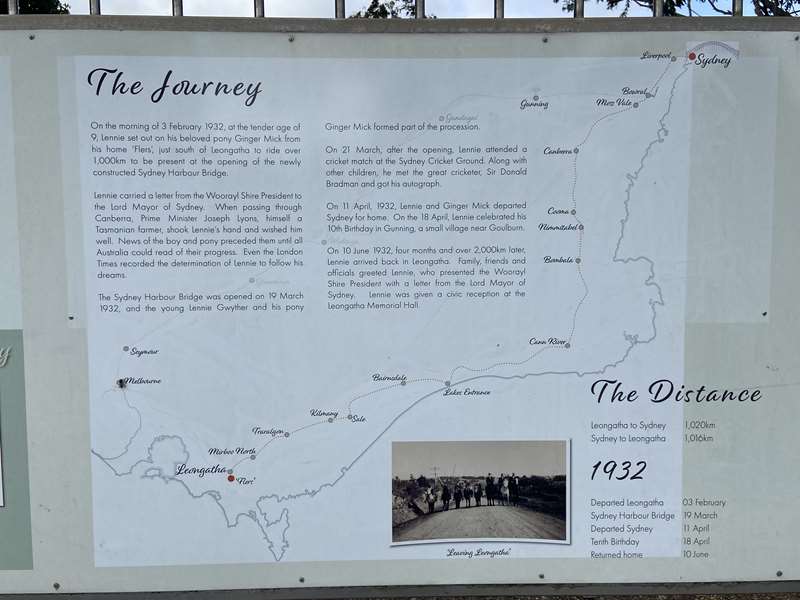
On the morning of 3 February 1932, at the tender age of 9, Lennie set out on his beloved pony Ginger Mick from his home 'Flers', just south of Leongatha to ride over 1,000km to be present at the opening of the newly constructed Sydney Harbour Bridge.
Lennie carried a letter from the Woorayl Shire President to the Lord Mayor of Sydney. When passing through Canberra, Prime Minister Joseph Lyons, himself a Tasmanian farmer, shook Lennie's hand and wished him well. News of the boy and pony preceded them until all Australia could read of their progress. Even the London Times recorded the determination of Lennie to follow his dreams.
The Sydney Harbour Bridge was opened on 19 March 1932, and the young Lennie Gwyther and his pony Ginger Mick formed part of the procession.
On 21 March, after the opening, Lennie attended a cricket match at the Sydney Cricket Ground. Along with other children, he met the great cricketer, Sir Donald Bradman and got his autograph.
On 11 April, 1932, Lennie and Ginger Mick departed Sydney for home. On the 18 April, Lennie celebrated his 10th birthday in Gunning, a small village near Goulburn.
On 10 June 1932, four months and over 2,000km later, Lennie arrived back in Leongatha. Family, friends and officials greeted Lennie, who presented the Woorayl Shire President with a letter from the Lord Mayor of Sydney. Lennie was given a civic reception at the Leongatha Memorial Hall.
Location: Centennial Park, opposite 22 Anderson Street, Leongatha
2. These gates commemorate local pioneers. Europeans first moved into the area in 1845. Dairying be-came important in the area in the 1880s, followed by the arrival of the railway in 1891. During the re-cession following the 1880's the government established a labour colony to alleviate unemployment. The land was subdivided for soldier settlement after World War One.
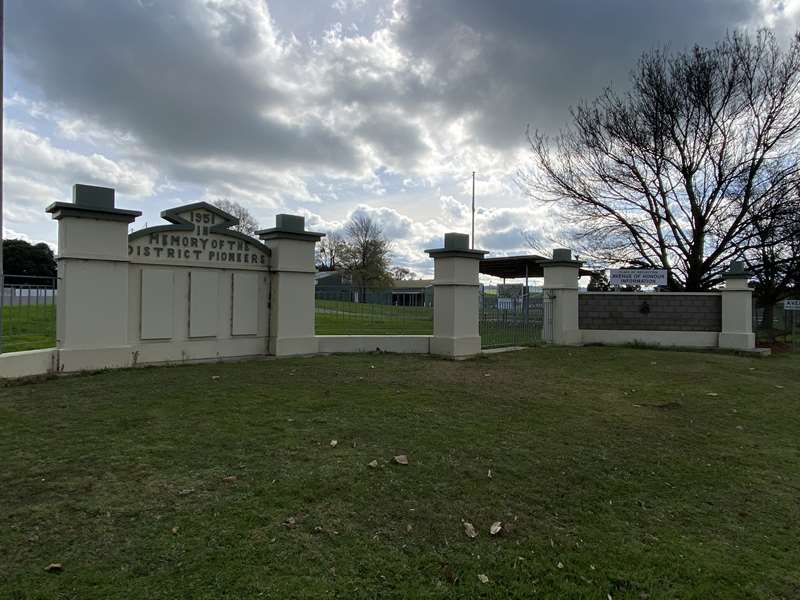
Location: Leongatha Recreation Reserve, 52 Roughead Street, Leongatha
3. Leongatha Memorial Hall commemorates those who served in World War One. The Hall and former Shire Offices were opened and dedicated by Brigadier General Elliot and Chaplain Colonel Cookston on May 24th 1926. The interior decoration originally included twelve panels depicting scenes from the leading Australian battles of the First World War, with the Proscenium being flanked by scenes depicting Gallipoli, and the battle between HMAS Sydney and the Emden. These were painted by Mr J Broche of Inverloch. The interior of the hall has been modernised and repainted, resulting in the loss of the elaborate memorial paintings and plaques. The Memorial Foyer opened in 1982 and contains the honour rolls and plaques.
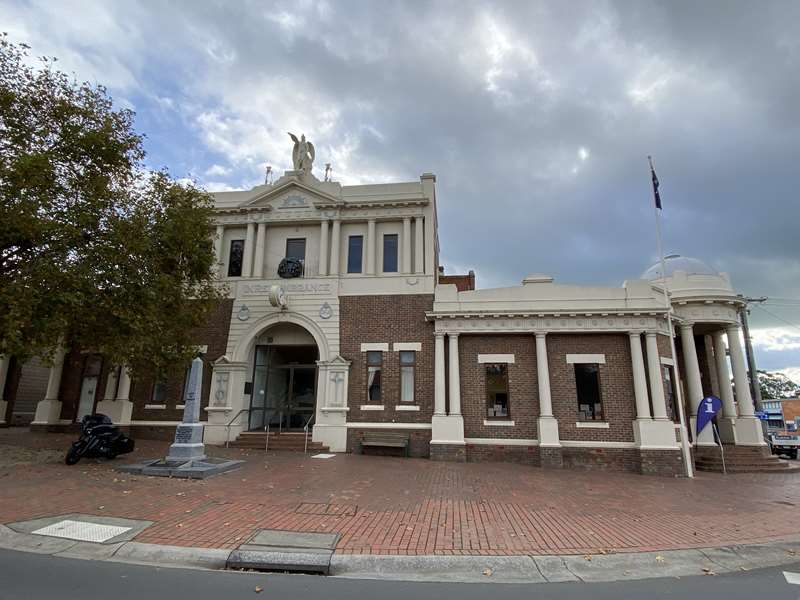
Location: Leongatha Memorial Hall, 6-8 McCartin Street, Leongatha
4. These stained glass windows in the Memorial Hall commemorate the 50th anniversary of VJ Day. Victory over Japan Day (also known as Victory in the Pacific Day, V-J Day, or V-P Day) is a name chosen for the day on which Japan surrendered, in effect ending World War Two. The term has been applied to both of the days on which the initial announcement of Japan's surrender was made - to the afternoon of August 15, 1945, in Japan, and to August 14, 1945 (in the United States) - as well as to September 2, 1945, when the signing of the surrender document occurred, officially ending World War Two.
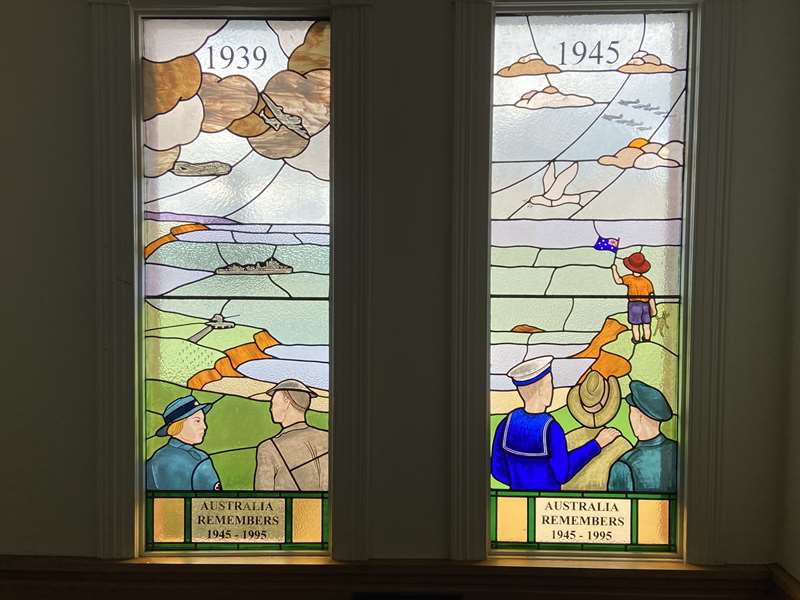
Location: Inside Leongatha Memorial Hall, 6-8 McCartin Street, Leongatha
5. This Memorial clock commemorates local doctor Horace Pern who practiced for many years in Leongatha. Dr Perri was also a Major in the 19th Battalion A.I.F. during World War One. Dr. Pern died in 1936.
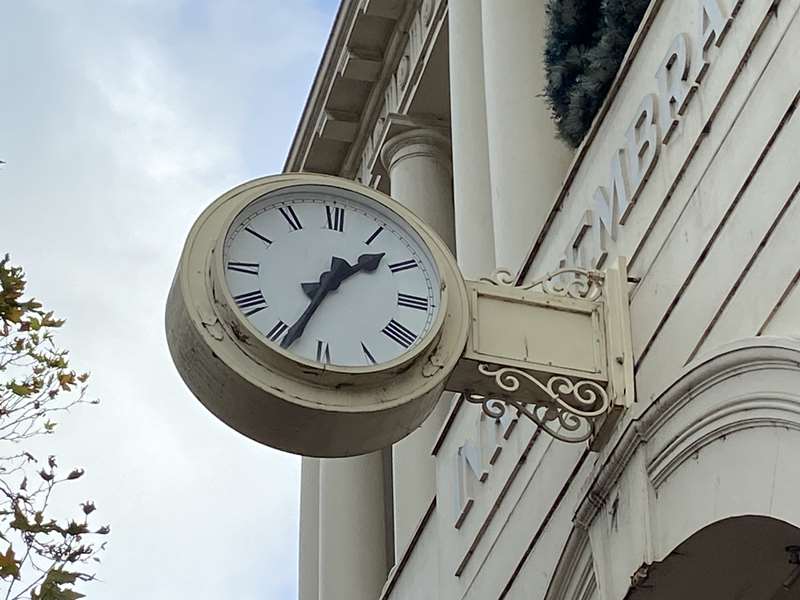
Location: Outside Leongatha Memorial Hall, 6-8 McCartin Street, Leongatha
6. The Leongatha War Memorial is a granite obelisk which was erected to commemorate those who lost their lives in World War One and World War Two. The black granite plaque at the foot of the obelisk is in-scribed with later conflicts.
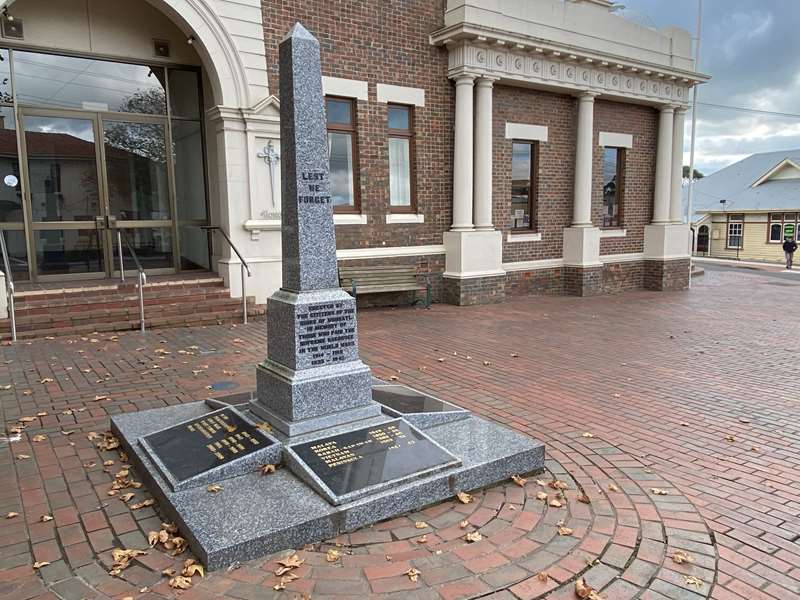
Location: Outside Leongatha Memorial Hall, 6-8 McCartin Street, Leongatha








